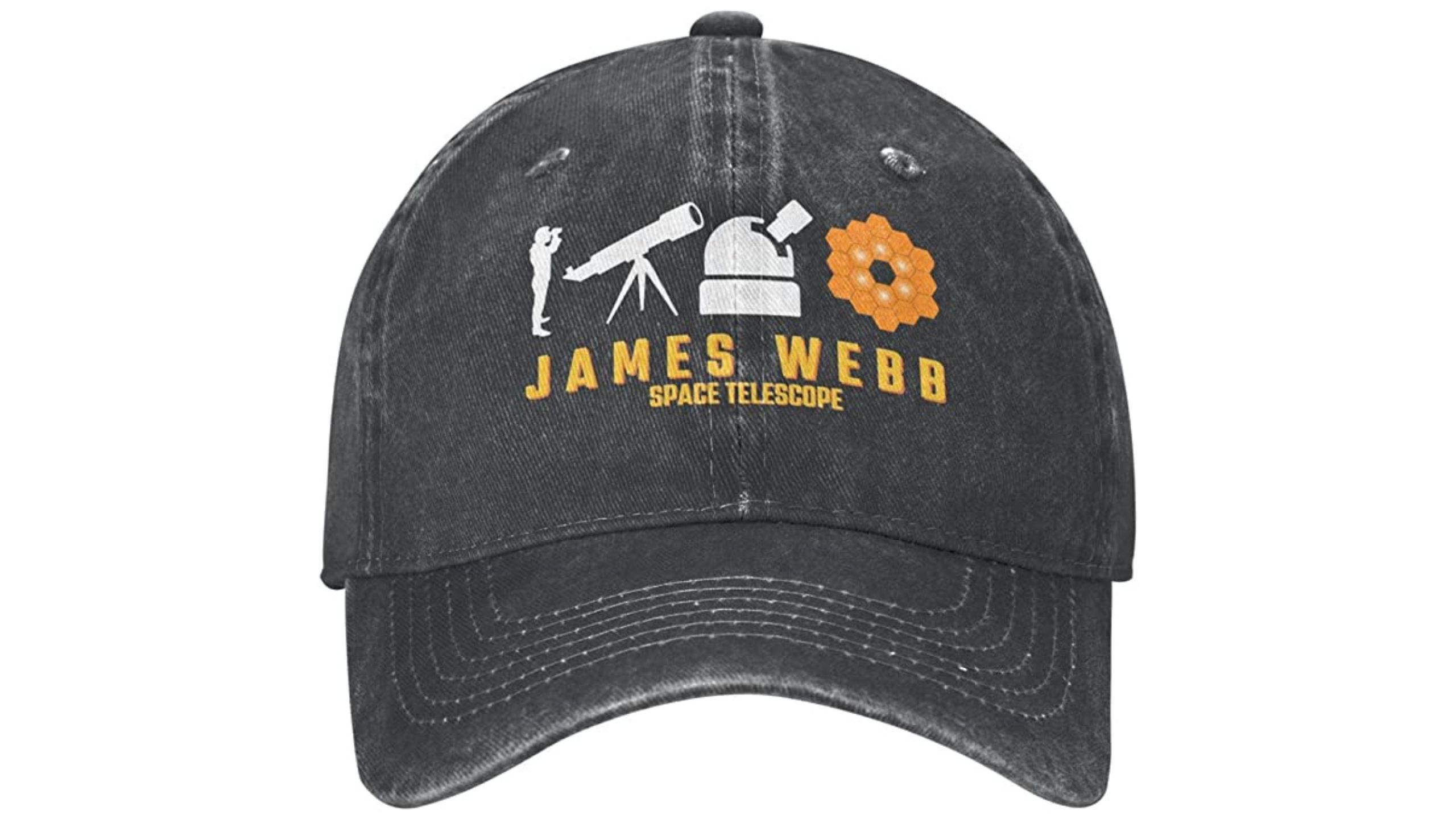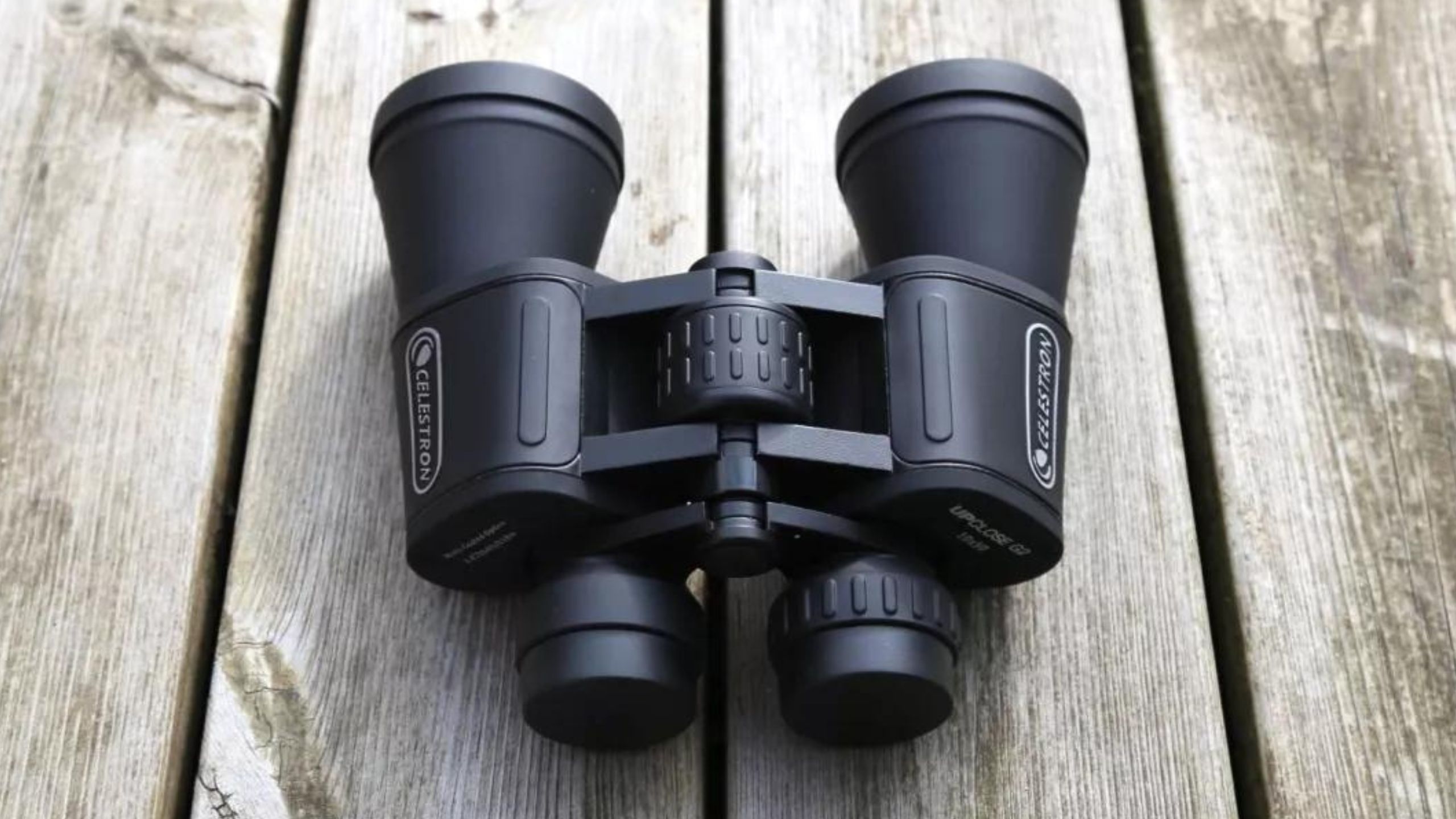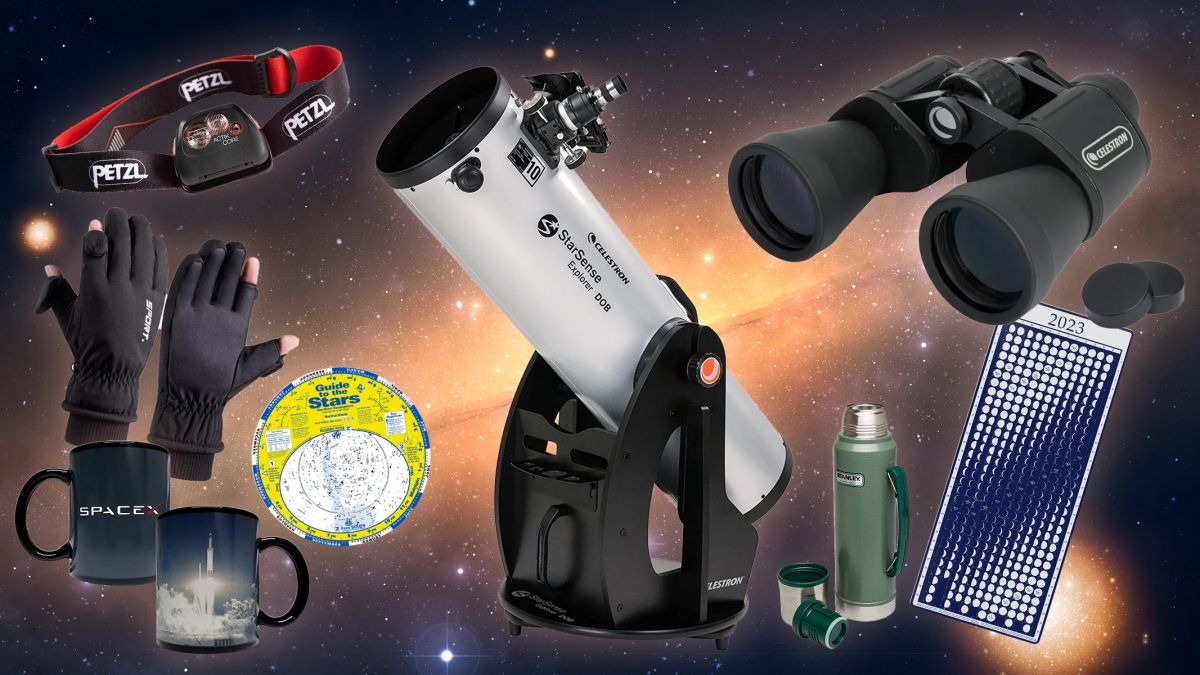Stuck for something to buy the stargazer in your life? Or in the market for something for yourself this holiday season? From easy-to-use and affordable binoculars and a smart telescope to space-themed stocking fillers and advanced stargazing gear, these gifts and treats will help any beginner or experienced amateur astronomer get the best from the night sky this holiday season and beyond.
NASA hats and t-shirts lost their cache years ago. If you want to demonstrate to other amateur astronomers that you’re one of them go for something bearing the logo of the latest and greatest space observatory — the James Webb Space Telescope (JWST). It’s poised to change everything we know about the universe and how it works, so get a heads-up early. This baseball cap comes in five colors.
An affordable pair of roof prism binoculars for viewing the night sky, the Celestron UpClose G2 10×50 feature 10x magnification — perfect for a wide field of view — alongside 50 mm diameter objective lenses to let in enough light at night. With a great balance between magnification (power) and aperture (the amount of light they collect), these binoculars are easy to set up, adjust and use.
Weiatas convertible winter gloves
(Image credit: Amazon)
Stargazing often requires a special kind of gloves. Since fiddling with a smartphone, camera or telescope in the cold is often necessary, fingerless gloves make sense — except in winter. The solution is to find gloves that are partly fingerless, like those from Weiatas. Made of Thinsulate insulated cotton and artificial leather with a fleece lining inside, they have two removable fingertips covers on the thumb and forefinger for manipulating astro gear.
Guide to the Stars: Planisphere star map
(Image credit: Amazon)
Sure, it’s old school. Yes, it’s a bit cumbersome. But one of the best ways to learn how to navigate the night sky is with a simple planisphere like the ‘Guide to the Stars’. A 16-inch diameter plastic chart, it’s a map of every star and constellation viewable from the northern or southern hemisphere during an entire year, with a moveable window that lets you see what’s up there on a specific date and at a specific time. It’s a valuable learning tool.
Moon Phase Calendar 2023
(Image credit: Amazon)
Planning a stargazing or astronomy trip? Always check with the Moon. Irritated by light pollution, some beginners will head out to a remote area to find dark skies only to find that there’s a bright Moon blotting out the stars regardless. This Moon Calendar 2023 gives at-a-glance access to when the Moon is up and down, with the 10-night ‘stargazing window’ of moonless nights glaringly obvious.
SpaceX mug
(Image credit: Amazon)
Everyone needs a boost in the morning. So why not start the day with a rocket launch into orbit? Graced with the SpaceX logo, this mug is black when not in use, but pour in hot water and an image appears of a SpaceX Falcon Heavy rocket blasting off into space.
Stanley Classic vacuum flask
(Image credit: Amazon)
Newbie amateur astronomers often spend weeks kitting themselves out with binoculars, telescopes and apps, but often forget the single most useful accessory of all. The humble flask — filled with tea, coffee, hot chocolate or soup — can hugely extend a stargazing or astrophotography session. This Stanley Classic vacuum flask is sold in three sizes — 1.1, 1.5 and 2.0 quarts — and comes with a cup, a collapsible handle and a 24-hour warmth guarantee.
Constellation whiskey glasses
(Image credit: Amazon)
Beginners often stall with their stargazing because they stop learning how to recognize what they’re looking at. So have them reach for this set of two whiskey glasses etched with the outlines of the northern sky’s major constellations. It’s got winter constellations such as Tauris and Gemini through spring’s Leo and Cancer to summer’s Pisces and Aries.
(Image credit: Future)
A headlamp with a red light mode is an absolute must for any stargazer or amateur astronomer. Every single observing session must begin with about 20 minutes of dark adaption, during which the stars appear to get brighter because the pupils dilate to allow in more light. Switch on a white light — and that definitely includes a smartphone — and a stargazer’s night vision is instantly killed. However, red light is far kinder to dark-adapted eyes, making this rechargeable, compact and multibeam headlamp ideal for tinkering with telescopes and cameras in the dark.
The Backyard Astronomer’s Guide: hardback book
(Image credit: Amazon)
For beginners, it’s hard to beat a great book about astronomy and sky observation. Even better when it’s written by experienced stargazers and astrophotographers Terence Dickinson and Alan Dyer. A modern classic, The Backyard Astronomer’s Guide — recently published as a fourth edition — includes expert guidance on telescopes, astrophotography and software as well as extensive observing guides for planetary, deep-sky, twilight and even daytime — and for both the northern and southern hemispheres.
ALPS Mountaineering Lynx 2-person tent
(Image credit: Amazon)
Astronomy is increasingly about travel. While once backyard stargazing was good enough, creeping light pollution means stargazers and amateurs astronomers have to get to rural areas to see the night sky at its best. A two-person stargazing tent like the ALPS Mountaineering Lynx Tent is handy when a meteor shower is on, the most important of the year being the Perseids in mid-August. At just 5 lbs. 1 oz the ALPS Mountaineering Lynx Tent is lightweight, so easy to carry to a remote site.
Rab Valiance down jacket
(Image credit: Amazon)
Watching a meteor shower in the depths of winter means being outside in the cold and not moving about much. Waiting for the aurora to appear in Alaska or northern Canada is a physical impossibility unless you’re prepared very well. Cue a down jacket, which is expensive, but worth it because of the insulation they offer. A great example is the Rab Valiance, a heavy-duty jacket with 700-fill recycled hydrophobic down that’s water-repellant and has zippered hand pockets and an internal chest pocket.
KingCamp Moon Chair
(Image credit: Amazon)
Stargazing is a pain in the neck. Waiting for shooting stars is the classic problem, but even using binoculars for extended periods is likely to quickly give amateur astronomers a reason to head back inside. The aptly-named KingCamp Moon Chair can help, allowing you to lay back and admire the night sky in comfort. It comes complete with a cup holder, storage pouch, and an easy-carry 10.4 lbs weight.
GravaStar Sirius P5 earbuds
(Image credit: Amazon)
Do you listen to music while you stargaze? It’s a great way to feel more immersed in the wonders of the night sky. Meanwhile, podcasts like AstronomyCast , NASA’s Houston We Have a Podcast and the invaluable Sky Tour Astronomy Podcast allow you to learn as you listen. It’s tempting to go for over-ear headphones in winter to keep you warm as well as wise, but the best year-round option is some wireless earbuds like the GravaStar Sirius P5 earbuds, which as well as being named after the night sky’s brightest star offer lossless sound quality and can be easily hidden underneath a warm beanie hat or similar.
(Image credit: Future)
It’s large. It’s heavy. It’s brilliant. A great value all-round telescope, this ‘push to’ Dobsonian telescope — also known as a ‘light bucket’ — is perfect for viewing deep-sky objects like galaxies and nebulae as well as planets and the moon. Available with either an 8-inch or 10-inch aperture, it’s got the added bonus of Celestron’s new StarSense — a clever smartphone app alignment — making it an easy way to explore the night sky.


